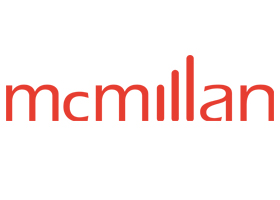


Bill 31 – Environmental Protection Statutes Amendment Act Passed and In Force – Cutting Red Tape and Returning Discretion to Alberta Environment and Parks
Bill 31 – Environmental Protection Statutes Amendment Act Passed and In Force – Cutting Red Tape and Returning Discretion to Alberta Environment and Parks
On July 23, 2020 Alberta’s Bill 31: Environmental Protection Statutes Amendment Act received Royal Assent and came into force assuring the sand and gravel industry and clarifying for the courts that silica sand is not considered a mineral under the Environmental Protection and Enhancement Act (EPEA). Projects removing sand, gravel, clay or marl do not require a mandatory environmental impact assessment (EIA) report and will be regulated as they had been prior to the Alexis decision of the Alberta Court of Appeal. While an EIA is not mandatory, the Director still has discretion to impose the requirement of an EIA along with other conditions.
The Bill amends the EPEA and the Public Lands Act (PLA). Specifically, it amends the definitions of “minerals” and “pits” to clarify how minerals and pits are defined, and removes certain references to silica sand, thus removing confusion for sand and gravel operators regarding the appropriate environmental review process.
These amendments are in response to the recent Alberta Court of Appeal decision of Alexis v Alberta (Environment and Parks).[1] In this case, Armin Alexis, a member of the Alexis Sioux First Nation, sought judicial review of the decision of the Director of Environmental Assessments (Alberta Environment and Parks), who exercised discretion not to require an EIA of the Wayfinder Regional silica sand facility known as “Big Molly” located near Glenevis, Alberta. The primary issue in the judicial review proceedings and subsequent appeal was the interpretation of the statutory definitions of “mineral”, “quarry”, and “mandatory activity” in the EPEA. The EPEA provides that a “mandatory activity” is subject to an EIA. If silica sand is classified as a “mineral”, the project would constitute a “quarry” and an EIA would be necessary. If, however, the silica sand is not classified as a “mineral”, then instead the project would constitute a “pit” and the requirement for an EIA would be at the discretion of the Director. The judicial review application was dismissed by the Chambers Judge with a ruling that it was reasonable for the Director to conclude that silica sand is not a mineral. However, on appeal, the Court found the Director’s decision was “irrational and illogical and must be set aside”, with the majority concluding that silica sand is in fact a “mineral”, meaning therefore that the project was a “quarry” requiring a mandatory EIA.
In light of the potentially serious financial, business and regulatory implications of the Alexis decision, Bill 31 was introduced on July 7, 2020 and received an expedited reading and assent process.
By way of background, under the EPEA pits are regulated through a simpler authorization process, whereas quarries producing more than 45,000 tonnes of material per year are regulated through a formal approval and mandatory EIA process. If the Alberta legislation was not amended, the Alexis decision would have resulted in approximately 500 sand extraction “pit” operations being re-classified as “quarries”, causing significant financial impacts and red tape burdens to existing operations and delays of proposed future operations. According to the discussion on the Bill in the Alberta Legislature, as recorded in Hansard, the Alexis decision contradicts the intent of Alberta’s regulatory framework as sand and gravel operations do not have the same environmental impacts as other minerals included within the statutory definition of minerals. The Legislature heard from sand and gravel operators, associations and rural municipalities that the industry would be thrown into disarray by the Alexis decision because of the uncertainty with respect to current projects and findings of incomplete for active pit license applications.
The enactment of Bill 31 means that the definitions in the EPEA now read as follows:
“minerals” means all naturally occurring minerals, including, without limitation, gold, silver, uranium, platinum, pitchblende, radium, precious stones, copper, iron, tin, zinc, asbestos, salts, sulphur, petroleum, oil, asphalt, bituminous sands, oil sands, natural gas, coal, anhydrite, barite, bauxite, bentonite, diatomite, dolomite, epsomite, granite, gypsum, limestone, marble, mica, mirabilite, potash, quartz rock, rock phosphate, sandstone, serpentine, shale, slate, talc, thenardite, trona, volcanic ash, sand, gravel, clay and marl, but does not include.
- sand and gravel that belong to the owner of the surface of land under section 58 of the Law of Property Act, or
- clay and marl that belong to the owner of the surface of land under section 57 of the Law of Property Act.
“pit” means an operation on or excavation from the surface of the land, including by stripping off the overburden, for the purposes of removing, opening up or proving sand, gravel, clay or marl, and includes any associated infrastructure, but does not include a mine or a quarry.
In the PLA, “silica sand” has been removed from Sections 52(1) and 82(1)(a).
EPEA and EIA requirements can catch proponents and operators off-guard and, without a good knowledge of these requirements, may lead to delays or cancellation of a project or expansion. McMillan LLP can help you safely navigate these requirements.
Click on the hyperlink for full text of the Bill and the Alberta Legislative Assembly discussion in Hansard
by Julia Loney and C. Richard Jones, QC
A Cautionary Note
The foregoing provides only an overview and does not constitute legal advice. Readers are cautioned against making any decisions based on this material alone. Rather, specific legal advice should be obtained.
© McMillan LLP 2020
Insights (5 Posts)View More
More Than Meets the Eye: The Legal Implications of British Columbia’s Agreement to Recognize Aboriginal Title Over Haida Gwaii
An analysis of legal implications related to the BC Government's agreement with the Haida Nation to recognize Aboriginal title over Haida Gwaii.
Lessons Learned from the TTC’s Ransomware Attack
Lessons learned from the recent investigation by the Ontario IPC into the effectiveness of the TTC's cybersecurity measures and ransomware attack response
Don’t Get Caught by Canada’s Patent Novelty Grace-Period
The key difference between Canada and other jurisdictions like the United States when relying on the grace-period for inventor disclosures.
Shifting Gears – Canada to Consider New Motor Vehicle Equipment Regulations to Help Prevent Auto Theft
Transport Canada announces plan to update safety standards to combat auto theft.
Budget 2024: Legislative Changes of Note for Investment Funds
In Budget 2024, the Government acknowledges that the restrictions placed on the property that may be held by registered plans have become unduly complex.
Get updates delivered right to your inbox. You can unsubscribe at any time.






